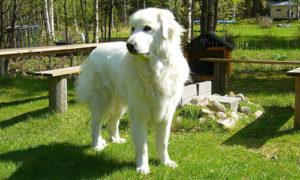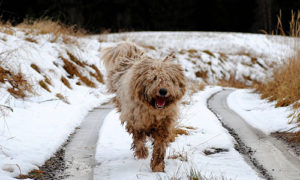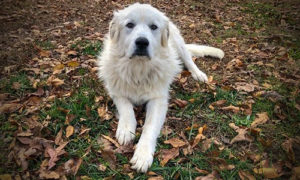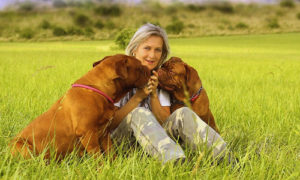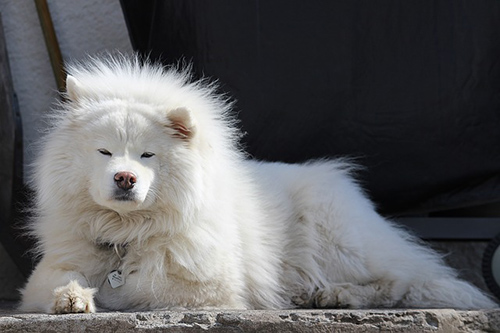
The Samoyed is a typical Nordic breed, used for centuries by tribes for herding, hunting, guarding, and hauling. It first came to public attention when polar explorers began using Samoyed as sled dogs for Arctic and Antarctic expeditions.
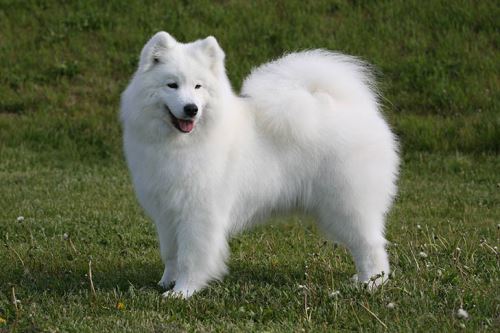
British dog fanciers became interested in the breed in the late nineteenth century. Most notably, Ernest Kilburn-Scott and his wife were primarily responsible for establishing Samoyed breeding programs in Britain.
They imported several dogs that ranged in color and type, including a former sled dog that the Kilburn’s found in an Australian zoo. The dogs quickly developed a following after Britain’s Queen Alexandra began breeding and showing them in the Edwardian era.

This breed is famous for its glistening white coat and appealing expression. It has a broad, wedge-shaped head, a medium-length, tapered muzzle, triangular, erect ears with slightly rounded tips, and sparkling, deep-set, almond-shaped eyes. Its black lips slightly curve upward at the corners, giving the dog its natural smile. The breed’s chest is deep with a level back, broad, oval-shaped feet, and a long, heavily coated tail carried up over the back.
Samoyed Breed Facts
- POPULARITY: Somewhat popular
- FAMILY: Northern
- AREA OF ORIGIN: Russia (Siberia)
- DATE OF ORIGIN: Ancient times
- ORIGINAL FUNCTION: Herding reindeer, guardian, draft
- TODAY’S FUNCTION: Sled pulling, herding trials
- OTHER NAME: Samoyedskaya
Activity level: These dogs make excellent jogging companions, but puppies should avoid strenuous exercise. Use caution when exercising a Samoyed during the summer. This dog does well in obedience, herding, sledding, and weight pulling.
Year of AKC recognition: 1906
Samoyed Temperament
These dogs are self-reliant, independent, and working dogs. Also, this is a breed that bonds firmly to its owners. It’s dignified, graceful, exceptionally loyal, and seeks approval and attention from its humans. If ignored, the Sammy can become demanding, as this is a faithful working dog that is happiest when it has a job to do. This dog is a keenly intelligent problem-solver and will become bored with a limited daily routine.
Samoyed Grooming
Brush weekly, more often during seasonal shedding in spring and fall
Coat: Heavy and weather-resistant, the breed’s full standoff double coat comprises a straight, harsh outer layer and a soft, short, thick undercoat. The males carry more of a ruff around the neck and shoulders, framing the head.
Color: White, white and biscuit, cream, or all biscuit with a silvery sheen to the coat
Samoyed Health Issues
- Major concerns: CHD
- Minor concerns: gastric torsion, cataract, hypothyroidism
- Occasionally seen: PRA, diabetes, RD/OSD, PDA
- Suggested tests: hip, eye, DNA for PRA, DNA for RD/OSD, cardiac
- Life span: 10-12 years
- Weight: male: 45-65 pounds; female: 35-50 pounds
- Height: male: 21-35 inches; female: 19-21 inches
Samoyed Buyer’s Guide and Advice
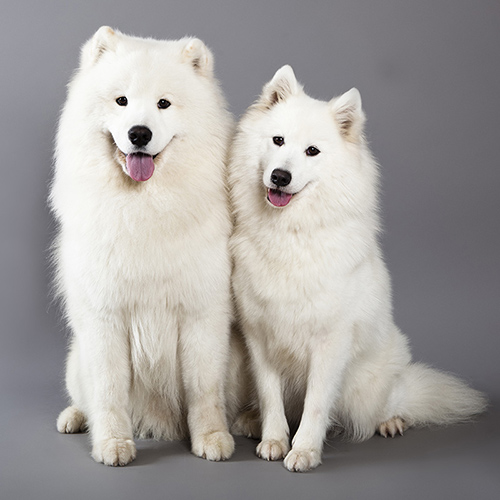
Purchase a puppy from a reliable breeder who will provide you with a written contract and health guarantee. Be wary of breeders who represent them as easy to keep clean or nonshedding.
Parent club: Samoyed Club of America; founded in 1923
Regional clubs: The SCA’s website lists clubs in fourteen regions on the “Regional Clubs” page under “About SCA.”
Rescue: You can find Rescue information on the Samoyed Rescue Groups” page under “The Samoyed” on the parent club’s website.


